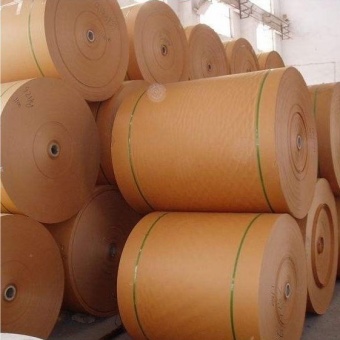

Views: 10 Author: Alistar Publish Time: 2025-02-17 Origin: Site









The global paper industry, a cornerstone of both industrial production and daily life, is navigating a complex landscape in 2025. While the sector has shown signs of recovery from the post-pandemic slowdown, it faces intertwined challenges and opportunities driven by macroeconomic policies, supply-demand dynamics, and sustainability imperatives. Below is a comprehensive analysis of the industry’s current state.
1. Market Recovery and Demand Trends**
The paper industry experienced a **moderate rebound in 2024**, fueled by improved downstream demand and declining production costs. Key sectors such as packaging, cultural paper (e.g., books, printing materials), and specialty paper have benefited from China’s policy-driven push to "revitalize consumption" . For instance, packaging paper demand is projected to grow at a mid-single-digit rate in 2025, supported by e-commerce and logistics expansion, while cultural paper remains stable due to steady orders for educational materials .
However, price pressures persist**. In 2024, finished paper prices trended downward due to weak terminal demand, but a partial recovery was observed in late 2024, particularly for corrugated paper (up 3.04% year-on-year) . Analysts anticipate **mild price stabilization in 2025**, driven by policy tailwinds and seasonal demand peaks, though oversupply risks linger .
2. Supply-Side Dynamics: Capacity Expansion and Structural Shifts**
The industry is grappling with **dual forces of capacity expansion and consolidation**. In 2024, China’s paper and paperboard output reached 144.18 million tons, a 9.1% year-on-year increase, reflecting aggressive capacity releases . While new capacity growth is expected to slow in 2025, sectors like white cardboard and specialty paper still face oversupply risks, whereas balanced supply-demand conditions are emerging for boxboard and cultural paper .
Market consolidation** is accelerating, with leading firms like Chenming Group (annual capacity: 11 million tons) dominating through economies of scale and vertical integration . Smaller players, however, struggle with profitability amid fierce competition and rising operational costs, prompting industry-wide restructuring .
3. Cost Pressures and Raw Material Volatility**
Raw material costs, particularly **pulp and energy**, remain critical variables. In 2024, pulp prices stabilized at lower levels due to increased global commodity pulp capacity (over 8 million tons added since 2023), but uncertainties persist around wood chip supply and geopolitical disruptions . Analysts predict **broadleaf pulp prices will fluctuate between $550–650/ton in 2025**, with energy costs (e.g., coal) likely to decline further, offering marginal relief to manufacturers .
China’s heavy reliance on **imported wood pulp** (due to limited domestic forestry resources) continues to expose the industry to global market volatility, underscoring the strategic advantage of firms with integrated forestry-pulp-paper operations .
---
4. Sustainability and Technological Innovation
Environmental regulations and consumer preferences are reshaping the industry. **Green transformation** has become a priority, with firms investing in circular economy models, energy efficiency, and cleaner production technologies . For example, Chenming Group has secured 460 patents, focusing on high-value, eco-friendly products .
Policy frameworks like China’s *14th Five-Year Plan for High-Quality Development of the Paper Industry* aim to achieve a **total paper output of 140 million tons by 2025**, alongside stricter emissions standards and digitalization initiatives . These measures align with global trends toward sustainable packaging and reduced carbon footprints.
5. Challenges and Strategic Outlook
The industry’s path forward hinges on addressing several challenges:
Overcapacity Risks**: Despite demand recovery, excess supply in segments like white cardboard may prolong price weakness .
Debt Management**: While profitability improved in 2024, weaker cash flow and debt metrics, especially among mid-tier firms, require vigilant liquidity management .
Resource Scarcity**: Long-term competitiveness will favor companies with secure pulp resources or advanced recycling capabilities .
Strategic Recommendations:
- Focus on high-margin specialty papers** (e.g., medical, food-grade) to mitigate commodity price risks.
- Accelerate digital integration** for supply chain optimization and demand forecasting.
- Strengthen vertical integration** to control raw material costs and enhance sustainability.
Conclusion
The paper industry in 2025 stands at a crossroads, balancing cyclical recovery with structural transformation. While policy support and demand revival offer optimism, success will depend on agility in navigating supply-demand imbalances, cost volatility, and sustainability mandates. Firms that prioritize innovation, resource security, and operational efficiency are poised to lead in this evolving landscape.
Alistar
WhatsApp/WeChat:0086-13643849451
Email:kingexport@263.net